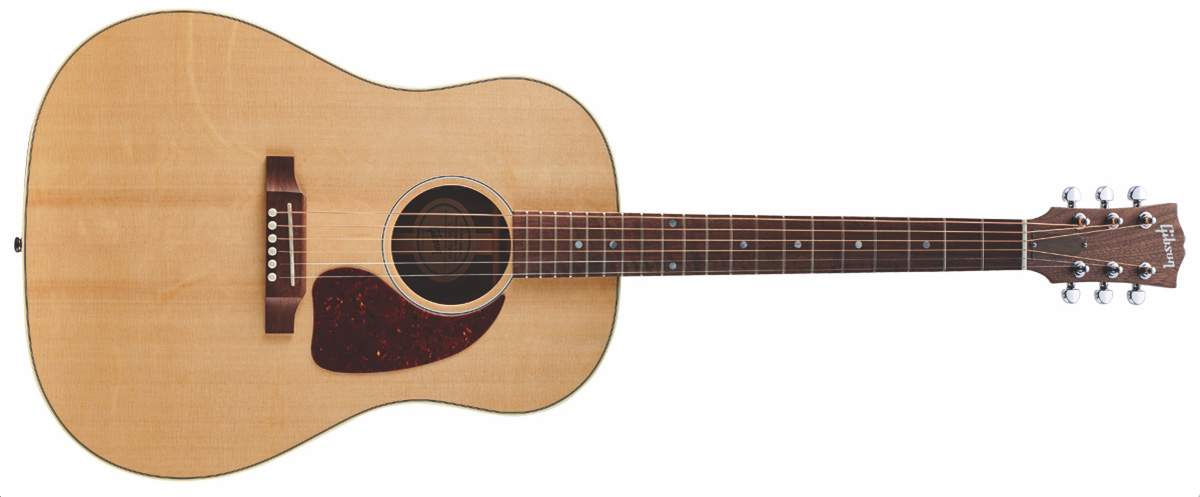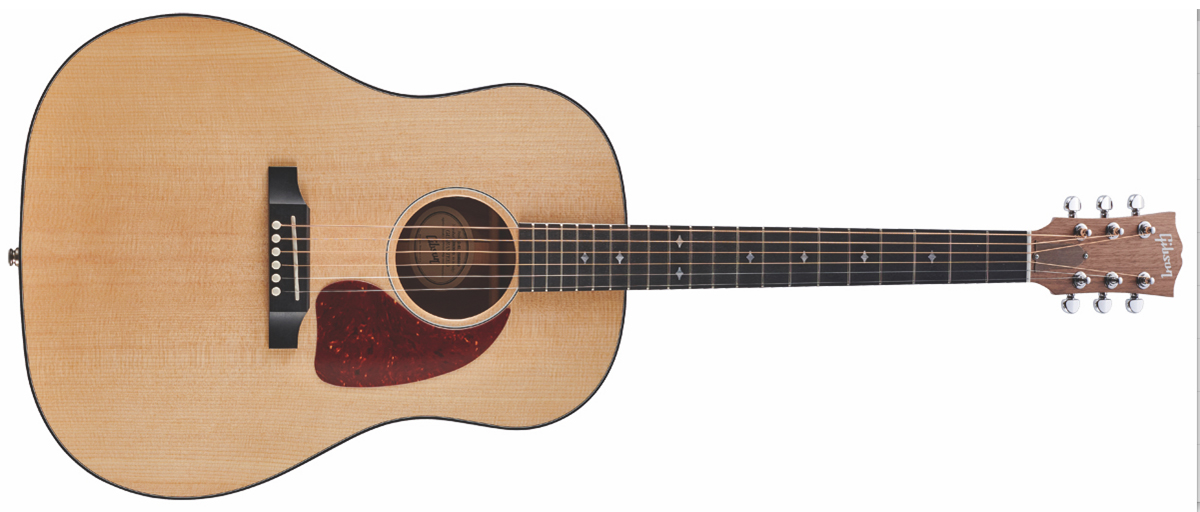Guitar World Verdict
These acoustics represent Gibson’s ability to read the current market and provide guitars filling the gap in the affordable mid-price range; they may well be the workhorses for the next generation of acoustic players. They're superb.
Pros
- +
The G-45 Studio is a solidly built dread.
- +
At this price, they are irresistible.
- +
Excellent builds.
Cons
- -
The Studio's walnut fingerboard is unusual but… why not?
- -
The Richlite 'board on the Standard might upset purists.
You can trust Guitar World
Gibson's new Generation series of acoustic guitars is a bold venture for Gibson. The G series is built at Gibson’s renowned Montana plant and given that we have seen some stunning instruments coming out of there, we’re a little bit excited.
The the G-45 Studio is what Gibson calls “a new point of entry into a Gibson acoustic”. It sounds too good to be true; $999 for an all-solid-wood electro-acoustic with ‘Gibson’ on the headstock? And it comes in a posh-looking hard case? The G-45 Standard is a little more upscaled in terms of spec, but is similarly offered at a price to make you do a double take.
- Bit too pricey? Check out the best acoustic guitars for under $500
- Take a look at the best acoustic guitars under $1000
- Find out the best acoustic strings for you
- Don't compromise - here are the best acoustic guitars
What is going on here? Well, let's take a look and find out…
First impressions are all-important. It's the approximate equivalent of ‘kerb-appeal’ when looking for a new house. Opening the very impressive-looking cases we found a handsome pair of acoustics with a minimum of aesthetic flourishes, suggesting that build quality and lots of it was what Gibson for was going for here.
Just as the finest wines come with the plainest labels, it's often the minimalist acoustic that knocks you off your feet with its tone and feel.
Opening the very impressive-looking cases we found a handsome pair of acoustics with a minimum of aesthetic flourishes, suggesting that build quality and lots of it was what Gibson for was going for here
The build materials are very similar on both models. Running through the respective lists, the recipe is largely the same, albeit with a few twists and tweaks to justify the extra $300 for the Standard.
And yet it’s the Studio model that first captures our attention. Maybe that's because it's truly remarkable to find an all-solid-wood acoustic Gibson at this price.
All the latest guitar news, interviews, lessons, reviews, deals and more, direct to your inbox!
Gibson G-45 Studio

Both the Standard and Studio models have solid Sitka spruce tops with solid walnut on the backs and sides. Acoustic players know all about Sitka, but the sonic qualities of walnut might be a little unfamiliar to many.
It is nicely figured, and less dense than rosewood or mahogany. Tone-wise, it falls somewhere in between. Walnut has the robust woodiness of mahogany but there is a depth there that is redolent of rosewood. Walnut and a spruce top could be a good pairing.
On the neck we have the unfamiliar utile. You might have heard it referred to as ‘sipo’. It is a wood on which the grain appears very similar to mahogany and its various substitutes, sapele, etc... Seeing utile on a guitar, though, is unusual, but considering the CITES restrictions on rosewoods and other endangered woods, perhaps what we’re seeing is the result of painstaking research into alternatives.
Either way, the necks are one-piece with walnut laminated facing on the headstock.
The fingerboard material on the Standard is walnut – again, not so common, but no complaints here because it looks great and has a reputation for strength and durability. It should be fine. The Standard has Richlite on the fingerboard. A composite of paper and resin, Richlite is certainly not a ‘solid wood,’ or even wood at all, but it looks and sounds like ebony, and it is hard-wearing and eco-friendly. Why shouldn’t it make a perfect fretboard material?
Richlite is used by Martin on its lower-priced models, and Godin uses it too. Not only is Richlite sustainable, those ‘green’ credentials are fairly high with the paper part of the composite sourced from recycled material. Open-mindedness should prevail, however uncomfortable the shock of the new; this very well could be the future.
Both models use Fishman’s Sonitone system, with the controls secreted inside the soundhole. Why are the two models priced so differently? Well, the Studio is a little more austere; think of it like a Les Paul Studio versus a Standard, for instance. But the differences are not that profound.
Stand them side by side and you'll see the Standard has slightly more ornate fingerboard markers. Both bodies are bound nicely, albeit with different materials. Both have nitro finishes. The Studio is matt all over. The Standard has a gloss top with matt everywhere else.
Gibson G-45 Standard

Feel & Sounds
The Studio is bright and crisp. It is balanced across the treble, middle and bass, with no unwanted peaks or troughs in the spectrum. It is the same for the Standard model, except, perhaps it has a soupçon more presence, a little more sparkle. The necks are almost identical, fat enough but not unwieldy. The playing experience is excellent.
Having spent a considerable time with both instruments, it would be a tough choice to make if we were forced to choose one over the other.
The Fishman Sonitone makes an excellent companion when both guitars are plugged in, offering a flexible control over the mix. This is another string to the G series’ already formidable bow; they are stage-ready, with pro-quality tones and builds at a price that's very hard to ignore. Gibson has a storied history in acoustic guitars. The next chapter looks quite thrilling indeed.
With over 30 years’ experience writing for guitar magazines, including at one time occupying the role of editor for Guitarist and Guitar Techniques, David is also the best-selling author of a number of guitar books for Sanctuary Publishing, Music Sales, Mel Bay and Hal Leonard. As a player he has performed with blues sax legend Dick Heckstall-Smith, played rock ’n’ roll in Marty Wilde’s band, duetted with Martin Taylor and taken part in charity gigs backing Gary Moore, Bernie Marsden and Robbie McIntosh, among others. An avid composer of acoustic guitar instrumentals, he has released two acclaimed albums, Nocturnal and Arboretum.
![Gibson's Generation series comprises the G45 Standard [right] at $1,299 and the G45 Studio [left] at $999](https://cdn.mos.cms.futurecdn.net/6cUgWjUJXFGCB57kvptbPo.jpg)



